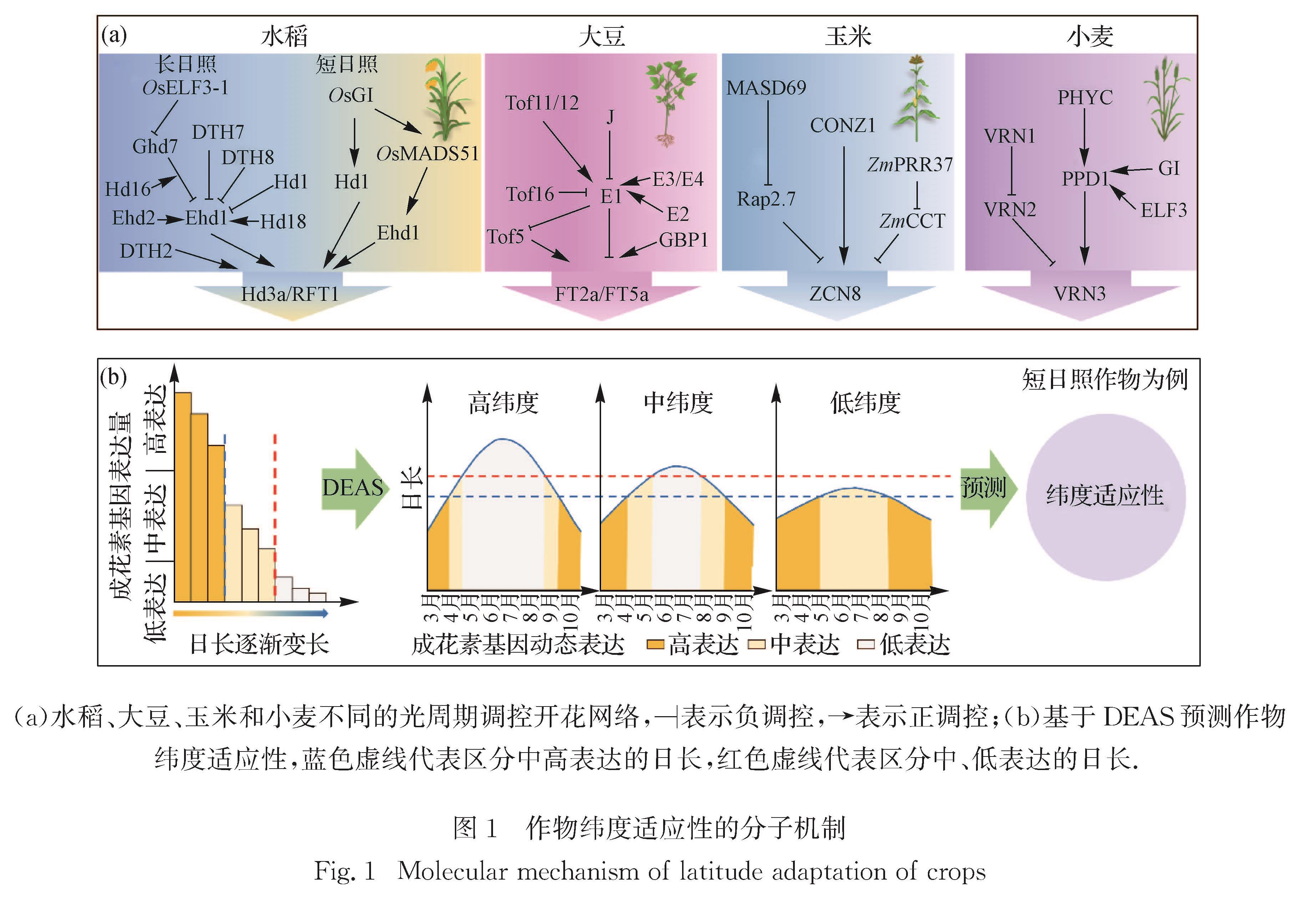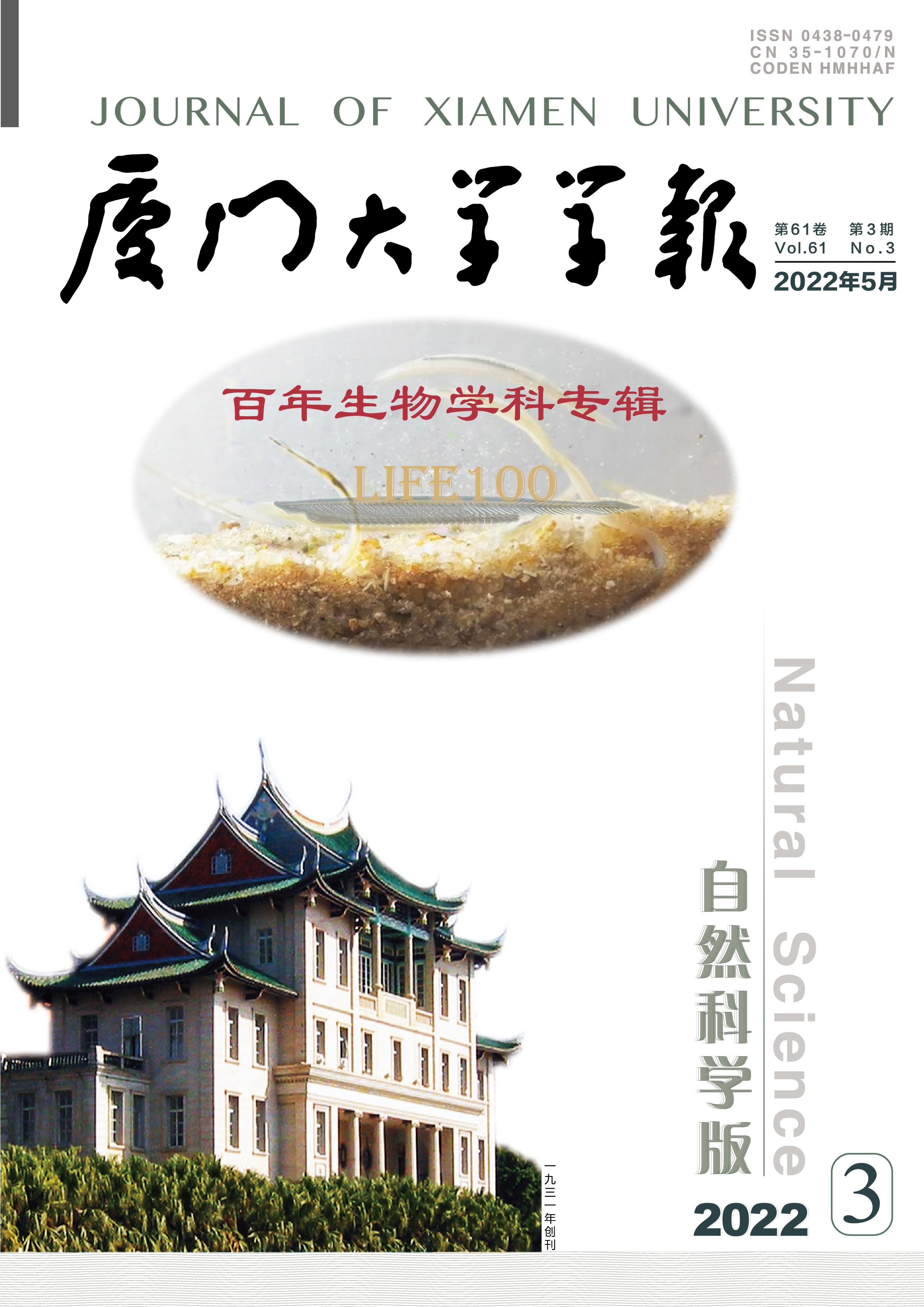作物的纬度适应性是指在特定的生态环境,作物全生育期与该生态区作物生长季节保持一致,从而实现产量的最大化.光周期、温度等环境因素和植物内在遗传因素影响作物成花素基因表达,从而影响作物的开花时间,进而决定生育期的长短.为应对全球气候变化和满足人们对粮食的大量需求,育种家通过育种和驯化使作物从起源地扩张至更广的区域以保障粮食安全.光周期基因的自然变异使作物的光周期敏感性发生变化,使作物能够调整自身开花时间来适应特定的生长环境,从而能够扩张到不同纬度地区.模式植物拟南芥(Arabidopsis thaliana)光周期信号调控网络的深入研究对于了解其他植物的光周期信号转导具有重要参考意义.水稻(Oryza sativa L.)、玉米(Zea mays L.)和大豆(Glycine max(Linn.)Merr.)是短日照作物,在向高纬度扩张时光周期敏感性钝化; 小麦(Triticum aestivum L.)是长日照作物,光周期敏感性同样受到光周期基因影响.近年来,很多重要的光周期基因被克隆,不同纬度地区作物光周期基因型存在差异,揭示了作物纬度适应性的分子基础.该文围绕相关研究进展进行综述.
Background: The latitude adaptation of crop means that in a specific ecological environment, the full growth period of crops is equal to the cropping season so as to maximize the yield. Environmental factors (e.g., photoperiod and temperature) and photoperiodic genes affect the expression of crop florigen genes and the flowering time of crops, which determine the length of the growth period. With the global climate change and increasing food requirements, breeders have expanded their crops from the origin to wider areas through crop domestication and breeding to ensure food security. The natural variation of photoperiod genes changes the photoperiod sensitivity of crops to adjust their flowering time, allowing them to adapt to specific growth environments and expand to different latitudes. For example, rice, corn and soybean are short-day plants and their photoperiod sensitivity decreases when they expand to higher latitudes, whereas wheat and barley are long-day plants and their photoperiod sensitivity is also affected by photoperiod genes. Many essential photoperiod genes have been cloned in recent years, revealing the molecular basis of crop latitude adaptation.
Progress: In recent decades, with the influence of global warming, crops have tended to expand to higher latitudes, which is accompanied by changes in photoperiod sensitivity. In crop breeding, a proper flowering time guarantees a high grain yield. Rice is a staple food crop in China. Heading date 1 (Hd1), days to heading 8 (DTH8), grain number, plant height and heading date 7 (Ghd7), and Ghd7.1/DTH7/OsPRR37 (DTH7) constitute the core photoperiod modules of rice. Their different combinations of function and non-function alleles finely regulate rice photoperiod sensitivity, thereby determining the latitude adaptability of rice. The natural variation of soybean J gene (as the ortholog of Arabidopsis thaliana early flowering 3) can prolong the vegetative growth period of soybean and expand the planting range of soybean in low latitude regions. Time of flowering 5 (Tof5), Tof11, Tof12, Tof16 affect the flowering time of soybean by directly or indirectly regulating the expression of the florigen genes GmFT2aand GmFT5a (as the orthologs of Arabidopsis thaliana flowering locus T), the natural variation forms of which affect the latitude adaptability of soybean. Natural variation in the promoter region of the maize florigen gene Zea mays centroradialis 8 (ZCN8) alters maize flowering time, whereas the expression of flowering suppressors ZmCCT9 and ZmCCT10 (encoding CO, CO-like, and TOC1 domain-containing proteins) is affected by transposons, thereby affecting the latitudinal distribution of maize. The primary locus that determines photoperiod sensitivity in wheat is photoperiod1 (PPD1), which is extensively selected during artificial breeding. At the same time, the natural mutation of the potato transcription factor, cycling dof factor 1 (StCDF1) has allowed potato to be more widely grown outside the original planting areas.
Perspective: As the global climate changes and the human population increases, breeders need to create more outstanding varieties to ensure food security. In the future process of crop breeding, shortening the growth cycle of each generation of crops by artificially controlling the photoperiod can speed up the breeding process. At the same time, with our in-depth understanding of the molecular mechanism of crop latitude adaptation, it will be beneficial for us to select crops for latitude adaptation.
Florigen genes are downstream factors of the photoperiod pathway. The daylength-sensing based environment adaptation simulator (DEAS) has been used to detect the expression of florigen genes under different daylengths, to simulate the dynamic expression of florigen genes in different latitudes, and to predict the latitude adaptation of crops. DEAS is a new method in crop latitude adaptation selection. In rice and other food crops, the functions of many photoperiod genes are known. The genotype of the reference variety in a given area can be obtained by sequencing, and DEAS can obtain the daylength sensing of the reference varieties. In rice introduction or breeding, specific gene editing (knockout or repair) can be performed on the photoperiod gene in the breeding variety by clustered regularly interspaced short palindromic repeats (CRISPR)/Cas9 technology. Using CRISPR/Cas9 to change the genotype of the target breeding variety would change the daylength sensing, thereby changing the growth period of rice and making the new rice variety with multiple-latitude adaptation.

